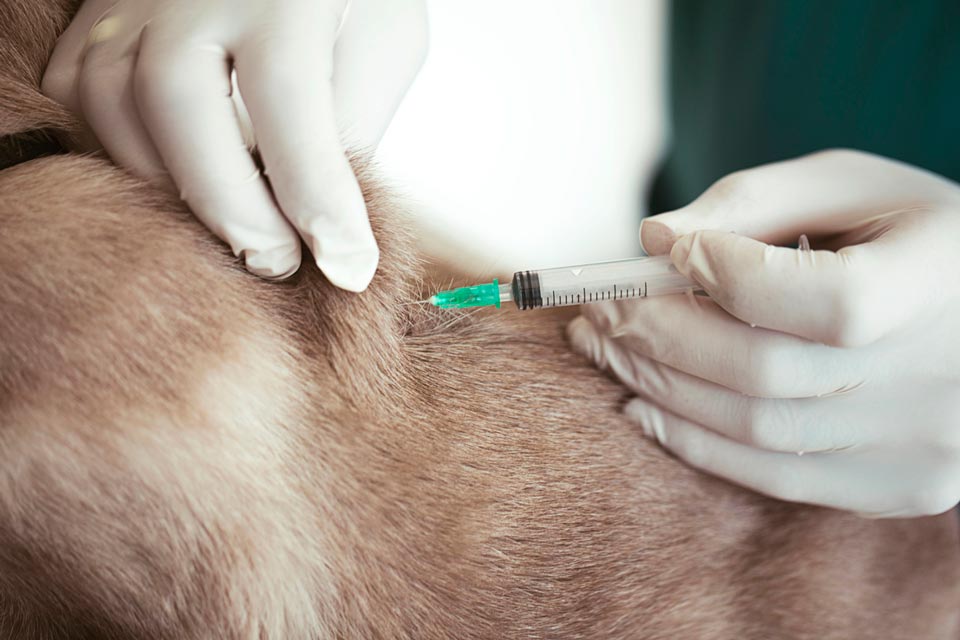Fine Needle Aspiration: FNA in Cats

If your veterinarian recommends that your cat undergo a fine needle aspiration (FNA) test, you might be concerned about the actual process and wondering about the information that can be gleaned from the results. Your veterinarian is best-suited to answer individual questions about your cat's unique situation, but you can learn general information about the test here.
What Is Fine Needle Aspiration in Cats?
A fine needle aspiration test involves placing a small, thin needle into an area of the body, attaching a syringe to it, and withdrawing cells. The veterinarian then places the collected material onto a slide and examines it under a microscope to aid in diagnosis. The cells can also be sent to a laboratory, where a specially-trained veterinary pathologist can examine them.
What Is FNA in Cats Used to Diagnose?
FNA is most often used to help diagnose skin lumps and issues with peripheral lymph nodes. However, it's also used to obtain samples from internal organs, joints, urine, and abnormal fluid accumulations in the chest or abdomen. When an FNA is needed on an internal structure, the veterinarian can use an ultrasound as a guide to help him or her get the needle into the right spot.
How Is an FNA Performed on a Cat?
A sterile, fine-gauge needle is placed into the area of interest. Nest, the veterinarian pulls back gently on a syringe attached to the needle. The syringe and needle are removed from the cat. The veterinarian takes the syringe off of the needle and draws some air into it. The syringe containing air is reattached to the needle and then pushed out while the needle is positioned over a slide. The air pushes the collected cells out onto the slide, where they can then be smoothed out and dried to examine under a microscope. Often, the veterinarian stains the slide to make the cells more visible.
Most of the time, anesthesia is not required to obtain an FNA sample. However, if the procedure is to be done to collect cells from an internal organ or if the patient is too wiggly or aggressive, short-term anesthesia might be required to keep him still enough for the procedure.
What Information Can an FNA Done on a Cat Provide?
The cells collected during an FNA can be examined for signs of inflammation, infection, or cancer. Sometimes, the results of an FNA are diagnostic, which means that the veterinarian can diagnose the issue based on it alone. Other times, the results are suggestive of something, but further testing must be done to verify the diagnosis. Occasionally, the procedure does not yield any meaningful results. Some types of tumors are difficult to extract cells from in this manner.
FNA Is Generally Safe and Fairly Inexpensive
Fine needle aspiration is a test that is only mildly invasive, has few potential side effects, is not very expensive, and can yield a good deal of information for a veterinarian trying to diagnose a condition. If the sample goes to the laboratory or requires ultrasound and/or anesthesia to accomplish, it can be more expensive.
You May Also Like These Articles:
MRI in Cats: What Is It and Why Might Your Cat Need It?
Common Blood Tests Done on Cats
Causes of Unexplained Weight Loss in Cats
Can Cats Suffer from Seasonal Affective Disorder (SAD)?



